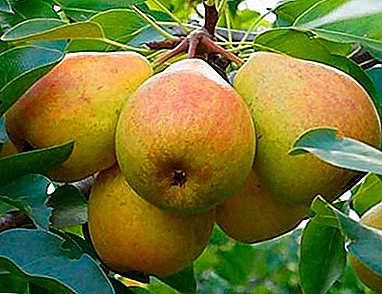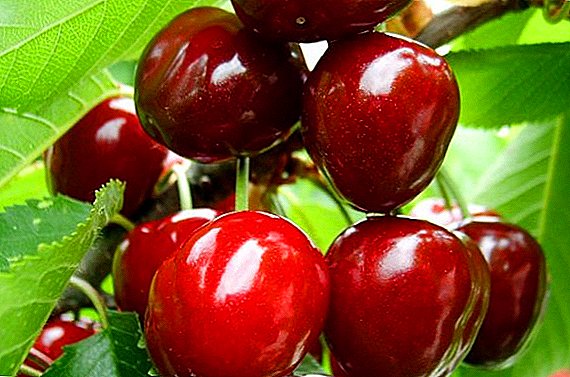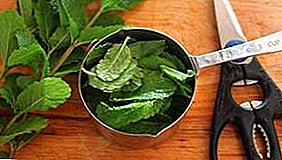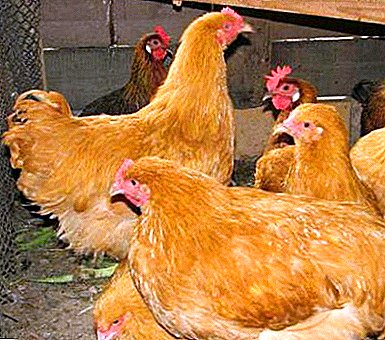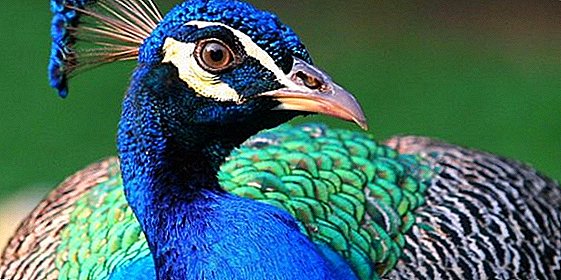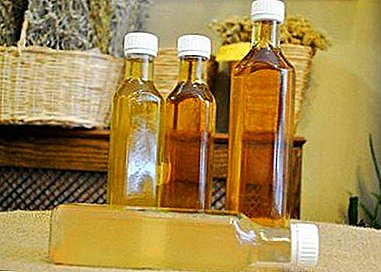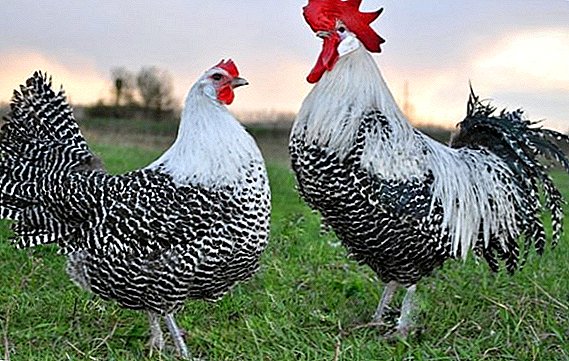 Silver brekel is a breed of chickens, designed for the production of eggs and common in Europe. For a long history, these birds were loved by farmers and poultry farmers for their attractive appearance and good productivity indicators. In addition, the meat of the broccoli has a very unusual taste unusual for domestic chickens - it is as tasty as the meat of wild quail. About all the nuances of the maintenance and care of birds of this breed will talk further.
Silver brekel is a breed of chickens, designed for the production of eggs and common in Europe. For a long history, these birds were loved by farmers and poultry farmers for their attractive appearance and good productivity indicators. In addition, the meat of the broccoli has a very unusual taste unusual for domestic chickens - it is as tasty as the meat of wild quail. About all the nuances of the maintenance and care of birds of this breed will talk further.
History of origin
 To date, it is not known for certain how this breed appeared. Silver brekel has been confirmed to be the most popular type of domestic chicken in Belgium for the past 3 centuries. This became the basis for thinking that it was Belgium that was the birthplace of the bird. Since the 1880s, the breed has become very common in Germany. During this period the branching of the breed began on lightweight and heavy chickens. However, in 1925, both species were crossed.
To date, it is not known for certain how this breed appeared. Silver brekel has been confirmed to be the most popular type of domestic chicken in Belgium for the past 3 centuries. This became the basis for thinking that it was Belgium that was the birthplace of the bird. Since the 1880s, the breed has become very common in Germany. During this period the branching of the breed began on lightweight and heavy chickens. However, in 1925, both species were crossed.
Important! Sometimes this breed is called silver campin, but this is a mistake. The broccoli and campins are distinguished by the gene pool, the appearance of the tail of the roosters, the incubation instinct and productivity in favor of the broccoli.
 The popularity of silver brekel began to fall steadily from the beginning of the 20th century, as a result of the breeding of highly productive hybrid breeds of bird.
The popularity of silver brekel began to fall steadily from the beginning of the 20th century, as a result of the breeding of highly productive hybrid breeds of bird.
In Belgium, the silver brekel was finally forgotten by 1970. After that, the restoration of the breed began in Germany.
Read also about the breeds of chickens: Maran, Amrox, Bielefelder, Barnevelder, Welsumer.
Description and Features
This breed has a very interesting appearance, hot temperament and specific behavioral habits. Next, we consider in more detail the exterior, character, differences between females and males, as well as the productive characteristics of the breed.
Appearance and color
Silver brekel can boast of a very beautiful, bright and presentable appearance, which is why it is often used as an exhibition breed. The bird's body is set horizontally, which creates the impression of squat and short stature. The head, neck, and partly the back (in males) are painted white with a silver tint, the whole body has a black and white plumage with an interesting pattern, a bit like the striped zebra color.  The head is small and slightly oblate, decorated with lush leaf-like combs, which sometimes hang to the side. The eyes are expressive, black or brown. The short neck goes into a sloping back and a large, rounded body. The legs are short, the legs are poorly developed. The wings are set high, fit snugly to the body. Both chickens and roosters have a very thick fluffy plumage all over their body. The paws and beak are painted gray with a blue tint.
The head is small and slightly oblate, decorated with lush leaf-like combs, which sometimes hang to the side. The eyes are expressive, black or brown. The short neck goes into a sloping back and a large, rounded body. The legs are short, the legs are poorly developed. The wings are set high, fit snugly to the body. Both chickens and roosters have a very thick fluffy plumage all over their body. The paws and beak are painted gray with a blue tint.  Silver brekel is different in average size - females weigh up to 2.2 kg, males - up to 2.7 kg.
Silver brekel is different in average size - females weigh up to 2.2 kg, males - up to 2.7 kg.
Rooster and chicken: the differences
The main differences between females and males are as follows:
- weight and size: males are slightly heavier and taller in the head;
- the lush tail of the males (long braids sometimes hang down to the ground);
- males on the back grow long white feathers, which is not observed in females;
- in males, the leg is thicker and longer, and the paw is more massive.

Character
Silver brekel differs in a hot-tempered, scandalous temperament, however this concerns mostly roosters. They can often arrange fights and fights, but they never touch the females of their breed. Silver-breasted males may be hostile to males of other breeds of chickens. The second feature of character is innate curiosity and activity. Therefore, equipping the territory for these birds, it is important to take care of security.
Did you know? Every hen of a female individual has a certain number of eggs laid from birth - potential eggs that a bird can carry. This number is approximately 4000 thousand. However, most chickens live within a few years, with the highest productivity indicators falling in the first year of life, after which they steadily fall by 15% annually.
Earliness and egg production
Among the advantages of this breed the most important can be called its rapid puberty. Already at 4 months of age, both male and female individuals are fully formed and ready to reproduce offspring. Egg production remains until the end of life (about 3-4 years).  In one year, the chicken can produce from 150 to 220 eggs under the best conditions of use with the use of dressings. However, as we have already noticed, this breed is not a record holder in the number of eggs. All eggs have absolutely snow-white shell, weigh about 60-70 g.
In one year, the chicken can produce from 150 to 220 eggs under the best conditions of use with the use of dressings. However, as we have already noticed, this breed is not a record holder in the number of eggs. All eggs have absolutely snow-white shell, weigh about 60-70 g.
Tips for poultry farmers: rating of egg breed chickens, egg-laying period in pullet chickens, vitamins for laying hens, what to do if chickens do not carry well, carry small eggs, chickens peck eggs.
Hatching instinct
Regarding incubation, you can find very contradictory reviews about this breed. Some claim that the braces are excellent hens with strong maternal instincts. Others are inclined to believe that female brekel is very bad at incubating eggs. Despite its compact size, the female brekel can heat up to 8 eggs at a time due to its thick and fluffy plumage.
Conditions of detention
Comfortable conditions of detention directly affect the productivity of chickens. Therefore, the arrangement of the chicken coop and the yard must be approached very responsibly. The same applies to feed.
Arrangement of the chicken coop and yard
The coop must be well insulated so that the mark on the thermometer does not fall below + 7-10 ° C. Heating is not necessary, except that in your area very harsh winters. The floor should be covered with a thick layer of straw or sawdust. The brekels definitely need to build a spacious, high roost. The higher the structure, the more comfortable and protected the birds will feel. Make sure that the place on the roost is enough for everyone, otherwise crush, disassembly and even fights are inevitable. The required size can be calculated as follows: for each representative, 20-25 cm should be allotted. The height of the perch can be 1-2 m, while a ladder must be built to prevent falls and injuries.  Inside should also be a place for nests. If there is no such thing, the chickens will rush in the most hidden and secluded corners of the yard, which will make it much harder for a person to find eggs.
Inside should also be a place for nests. If there is no such thing, the chickens will rush in the most hidden and secluded corners of the yard, which will make it much harder for a person to find eggs.
Important! Silver brekel can not be kept in a cage. A bird is distinguished by mobility, curiosity and some restlessness, therefore, due to the inability to move, its health can deteriorate greatly.
Equally important to equip the birds yard for walking. They need enough space for high-quality, full movement.
When arranging the territory, take into account such recommendations:
- from the territory it is necessary to remove any objects about which the birds may be injured;
- the fence must be very strong, otherwise the birds will very quickly be outside;
- The fans also left the territory by air, so over the patio you need to stretch the net or awning.

How to endure the cold
In general, the breed normally tolerates lower temperatures, but it is not adapted to severe frosts. Therefore, if the mark on the thermometer drops below -10 ° C, it is better to abandon the walking of birds. You can let them out on a sunny, sunny, windless day, in the absence of extreme cold. Previously, you need to sprinkle the territory with a thick layer of sawdust or straw. Because of the frost, the silver brekel suffers combs and paws.
What to feed adult chickens
The basis of the diet are such products:
- whole and fractional grain (barley, wheat, millet, corn);
- in the summer, 20% of the diet should be green (clover, alfalfa, nettle, meadow grass);
- sometimes you can pamper the bird with root vegetables (beets, carrots, turnips, potatoes, pumpkin);
- animal products (worms, bone and meat meal, dairy products).
Important! In the molting season, which happens to females annually, the birds need more intensive feeding. It is absolutely normal that during this period they cease to be carried.
There must be access to clean drinking water. In winter, the water must be heated. It is very important to add eggshells to food to increase productivity. Also brekeli, like any breeds of chickens, minerals are needed. These may be shell rock, chalk, limestone, salt or ash.  The frequency of feeding is 3 times a day every 6 hours, in the winter time the size of the portions needs to be increased.
The frequency of feeding is 3 times a day every 6 hours, in the winter time the size of the portions needs to be increased.
Learn how to make feed for laying hens at home.
Breeding chicks
As we indicated earlier, there is a lot of controversy regarding the breeding instinct of this breed. If a chicken is caught very active and inquisitive, it may not be able to remain immobile for a long time, hatch and raise its own offspring in the future. If you got such a hen, you need to resort to the use of an incubator. For good reproduction, it is necessary to observe a certain proportion of females and males: there should be only one rooster for 8-10 hens.
Read also about the selection criteria and characteristics of the best incubators: "Cinderella", "Blitz", "Perfect hen", "Layer".
Egg Incubation
For incubation, the largest eggs from healthy individuals are selected as the female is carried. The maximum period for incubation is 7 days. Before placing the selected material in the incubator, it should be examined with the aid of an ovoscope: whether there are any defects, where the yolk is located, if there is an air chamber (it should be in the extended end). Next, the shell is treated with any disinfectant solution and the eggs are placed in the incubator with the extended end to the top. The device is preheated to + 37 ° C.
Did you know? It takes approximately 24 hours to form a healthy egg in the oviduct of the chicken.
If you grow chickens in large volumes, it is advisable to purchase a special factory incubator with sensors and automatic maintenance of temperature and humidity. In the incubator, the eggs mature for 3 weeks. Be sure to note the date of laying the material in the incubator!  The main stages of the process:
The main stages of the process:
- First week. It is necessary to maintain the temperature at + 38 ° C, humidity about 60%. Starting from 3-4 days from the beginning of warming up, the incubator should be regularly aired, and the eggs should be turned over to the other side.
- Days 8-10. It is necessary to lower the temperature by 1 ° C and reduce the humidity by 10%. The number of airing and turning comes down to 2 per day and remains until the hatching of offspring.
- Second week The temperature is the same, the humidity drops to 45%. At this stage, the eggs are examined with an ovoscope and selected defective. The pronounced vascular network, condensed in the center of the egg, indicates the correct development of the embryo.
- From the 19th to the 24th day the spitting begins. It is necessary to raise the temperature and humidity (+ 39 ° С, 70%). After hatching and drying, chicks can be transferred to a special box.
Newborn babies need a warm and steady light for the first time, until they get stronger.
Care for the young
Newborn babies are born weighing only 35-38 g, look very unpresentable, weak and stunted. However, after a couple of hours, when the feathers dry, the chickens get a more attractive look. They have a good plumage and good health from an early age, so the survival rate of chicks is very high - 90-95%.  The first days contained in a box with lighting and heating. Approximately one week after birth, the most viable individuals should be examined and selected.
The first days contained in a box with lighting and heating. Approximately one week after birth, the most viable individuals should be examined and selected.
Criteria for evaluation:
- down thick, soft, no bald patches;
- the eyes are lively, brilliant, mobile;
- the chicks show activity and curiosity, react to light and sound;
- wings not lowered, not bulged, not sagging;
- there are no wounds and traces of blood or mucus at the place of the umbilical cord fastening
Upon reaching the age of one week, chicks can be placed in the hen hen.
Chicken Diet
Chickens feed on their food up to 1.5-2 months of age, after which they switch to "adult" food. The frequency of feeding is 4 times a day, the size of the portions should be sufficient so that the babies are fully fed. Upon reaching the age of 60 days, the portion size can be reduced by 15-20%.  The basis of the diet of the newborn and young chicken:
The basis of the diet of the newborn and young chicken:
- chopped boiled egg;
- ground meadow grass (optional);
- ground corn (you can replace the decoy).
Among the health benefits of supplements: fish oil, yeast, ascorbic acid. When the babies are getting stronger, you can gradually add other products to the diet until the full transfer to the "adult" menu.
Herd replacement
Chicken brekel retain productivity over 3-4 yearsthen grow old. Therefore, the update of chickens can be carried out once in the specified period.
Propensity to disease
Under all conditions of detention, good nutrition and the absence of freezing in the winter, the silver brekel will delight you with its good health and immunity. These birds, like other breeds of chickens, can have smallpox. To prevent infection, it is necessary to vaccinate chickens at the age of 2 months. 
Advantages and disadvantages
In most cases, this breed receives positive feedback from the owners. This is not surprising, because the silver brekel has a lot content benefits:
- have good immunity and health, rarely get sick;
- the precocity of females and males;
- delight the eye with its beautiful, outstanding appearance;
- Brekel meat is very much appreciated for its unusual taste, similar to quail meat;
- with good content, they show good egg production;
- egg production continues until the end of life (slightly decreases in winter);
- unpretentious in food and care.
However, there are some drawbacks:
- missing or poorly expressed instinct nasizhivaniya;
- roosters are quarrelsome and difficult to live with other breeds;
- Sometimes they remember offenses on a person.
Video: silver brekel breed
Poultry farmers reviews about the brekel breed


In general, this breed is an excellent option for the content on the site. For beginners in the poultry industry, this will not be the best choice because of the difficulties with parental instincts brekel. And for experienced poultry farmers to keep these feathered beauties will not be difficult at all. With proper poultry care, you can get high egg production rates and tasty, dietary meat.


